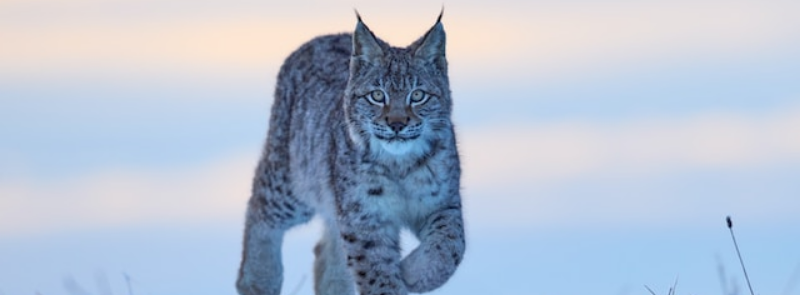
When It Occurs
Every June 11th
Timeline
Days Passed (932)
# Hashtags
#InternationalLynxDay #HabitatProtection
In 2017, International Lynx Day was introduced through a collaborative effort led by the transboundary 3Lynx Project. Since its inception, the day has been commemorated annually to shed light on the significant threat faced by these majestic cats.
The purpose of International Lynx Day is to enhance understanding and awareness of the challenges confronting these felines. It also aims to generate funds and initiatives to safeguard them, allowing their populations the necessary time and conditions for growth. This day encourages individuals to explore various avenues of support for this noble cause, contributing to the restoration of nature by ensuring the protection and well-being of these beautiful creatures in their natural habitats.
Lynx Species
- Eurasian Lynx (Lynx lynx): Found in forested areas of Europe and Asia, the Eurasian lynx is the largest lynx species. It primarily preys on ungulates such as deer and wild boar.
- Canada Lynx (Lynx canadensis): Native to North America, the Canada lynx inhabits boreal forests and is specially adapted to hunting snowshoe hares, its primary prey.
- Iberian Lynx (Lynx pardinus): Endemic to the Iberian Peninsula in southwestern Europe, the Iberian lynx is one of the most endangered cat species in the world, with a small population confined to fragmented habitats.
Importance of Lynx Conservation
- Ecosystem Balance: Lynx species play a crucial role in maintaining ecosystem balance by controlling prey populations, such as deer and rabbits, which helps prevent overgrazing and habitat degradation.
- Indicator Species: Lynx are considered indicator species, meaning their presence or absence can indicate the overall health and biodiversity of ecosystems.
- Cultural Significance: Lynx have cultural significance in many indigenous cultures and are often revered as symbols of wilderness and strength.
- Tourism and Recreation: Lynx conservation can support eco-tourism and recreational activities such as wildlife viewing and photography, benefiting local economies.
- Genetic Diversity: Protecting lynx populations contributes to the conservation of genetic diversity within the species and promotes overall biodiversity conservation.
Threats to Lynx
- Habitat Loss and Fragmentation: Loss of habitat due to urbanization, deforestation, and infrastructure development fragments lynx populations and reduces available habitat.
- Prey Availability: Declines in prey species populations due to habitat loss, hunting, and climate change can impact lynx survival and reproduction.
- Human-Wildlife Conflict: Lynx may come into conflict with humans over livestock depredation, leading to retaliatory killings and persecution.
- Road Mortality: Lynx are vulnerable to collisions with vehicles on roads and highways, especially in areas where roads fragment their habitat.
- Illegal Hunting and Poaching: Illegal hunting and poaching for fur, trophies, and traditional medicine pose significant threats to lynx populations, particularly in regions with lax enforcement of wildlife laws.
Conservation Efforts
- Habitat Protection: Establishing protected areas and wildlife corridors to conserve lynx habitats and facilitate connectivity between populations.
- Prey Management: Implementing measures to conserve and manage prey species populations, such as deer and hares, to ensure an adequate food supply for lynx.
- Translocation and Reintroduction: Translocating lynx individuals to establish or augment populations in suitable habitats and reintroducing lynx to areas where they have been extirpated.
- Research and Monitoring: Conducting research on lynx ecology, behavior, and population dynamics to inform conservation efforts and monitor population trends.
- Education and Outreach: Raising awareness about lynx conservation issues among local communities, stakeholders, and policymakers through educational programs, public outreach campaigns, and advocacy efforts.
International Cooperation
International cooperation and collaboration among governments, conservation organizations, researchers, and local communities are essential for the effective conservation of lynx species. Efforts such as sharing scientific data, coordinating conservation initiatives, and implementing transboundary conservation strategies can help address the complex challenges facing lynx populations across their range.
While there may not be an officially recognized International Lynx Day, individuals and organizations passionate about lynx conservation can use this opportunity to raise awareness, advocate for conservation measures, and support initiatives aimed at protecting these iconic and elusive felines.


